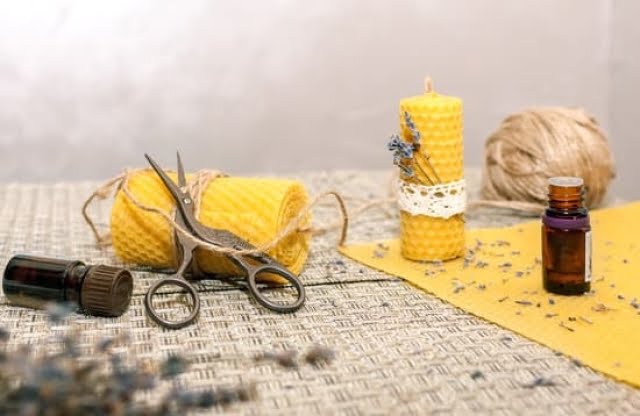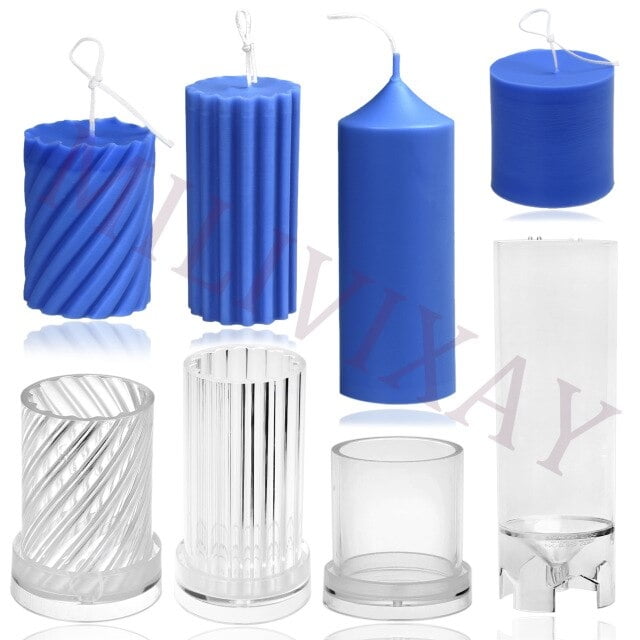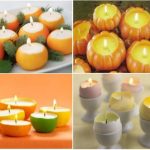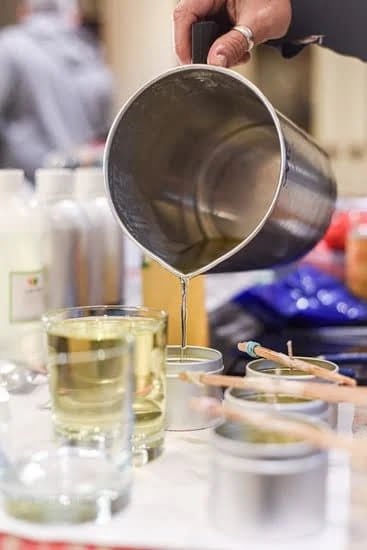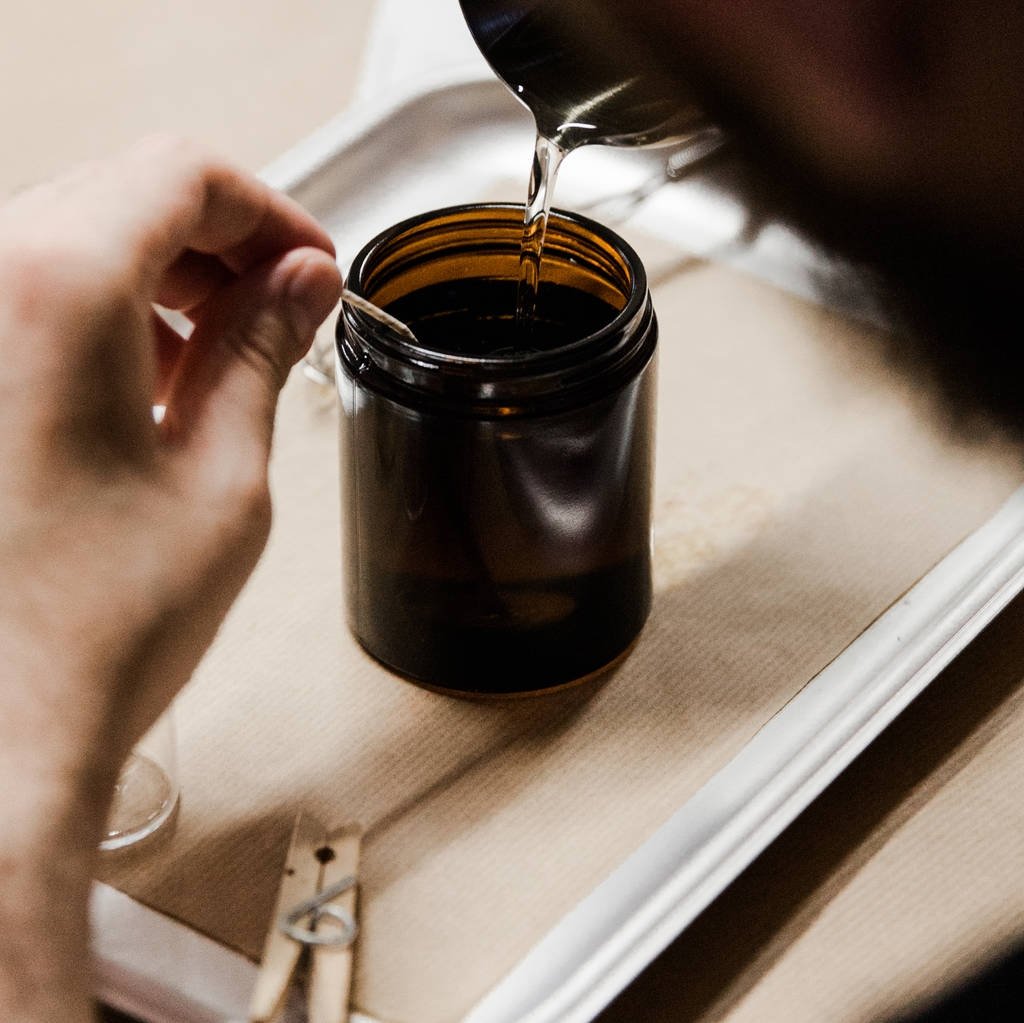Introduction
Making candles is an age-old craft that requires understanding and control of temperatures. Essentially, there are two distinct stages when making candles – the melting stage and the cooling stage. Depending on the type of wax used, ideal temperatures for successfully crafting a candle vary. Knowing how to manipulate these temperatures is key to making quality products.
During the melting process, wax must be heated until it reaches a liquid, pourable state. This temperature can be anywhere from 120 – 145 degrees Fahrenheit (48- 62 Celsius). Too low of a melting temperature means dry, brittle wax will result. And too high of a temperature can cause the wax to burn which can result in sooty smoke and flame that could damage the wick and lessen burn time.
When pouring the melted wax into moulds or containers, it needs to remain around 150-180 degrees Fahrenheit or 65- 80 Celsius). This range is important because if it gets much hotter than that it can cause pooling on top, discolouration and shrinkage when chilling before use. It is usually best to aim for letting your candles cool slowly at room temperature so that any air bubbles will mostly vanish during this period for best looking results.
For making more complex shapes such as pillars or pillars with detailed designs , the cooling process becomes more important since these shapes require cooler waxy temperatures in order to hold their shape . Cooling should ideally take place slowly over several hours at 59-77 Fahrenheit (15-25 Celsius) for best results . If left too cold , your creations may become overly rigid; conversely not allowing them enough time to cool off also causes them not hold size/shape properly .
In conclusion, success when making candles relies heavily upon maintaining precise temperatures throughout both stages – melting and cooling -resulting in a safer burning experience as well as aesthetically pleasing product ready to market!
Types of Wax
The type of wax you use to make candles will determine what temperature is ideal for the job. For example, paraffin wax is best melted at around 120 to 140°F (about 49 to 60°C). Beeswax is harder, so it needs higher temperatures of 160°F (71°C) or higher. Soy wax requires a lower temperature—120°F (49°C).
It’s important to note that the melting temperature likely won’t be low enough to work with most adhesives and oils. For instance, if you’re using a wick stearin adhesive, it should be heated up in the range of 150–180°F (66–82°C). If you want your candle suitable for scenting and coloring, essential oil blending usually happens at a temperature between 195 and 205 degrees Fahrenheit (90 and 96 degree Celsius).
When working with waxes that burn hotter than usual, such as beeswax and palm wax which require temperatures of 200-210°F (93-99°C) during the melting process, other considerations must be taken into account. It’s recommended to use a double boiler when melting these waxes, or else the heat distribution may be too uneven for successful formation. You can also adjust any recipes accordingly based on the type of wax being used by swapping out some melting points and amounts associated with them. Be sure to research and read instructions before attempting anything new!
Temperature Variables
The temperature at which candles are made can vary greatly depending on the type of candle being made, the environment around it, and many other factors. For example, using a higher temperature might be necessary in order to melt harder waxes while cooler temperatures could be used to ensure that certain items such as decorative elements do not burn or melt.
In addition, the humidity in the air can also affect the candle making process. If there is too much moisture present in the atmosphere, it can cause the wick to burn slowly or prevent wax from evenly melting and hardening. Conversely, if there is too little humidity present then it can make it difficult for your candle to remain lit and bond properly with its wick.
Finally, location plays a role as well since temperature levels tend to drop rapidly during night hours and rise significantly during daytime hours. If you’re attempting to make large batches of candles outside or in an enclosed workshop then you should closely monitor these environmental changes in order to ensure you are working within optimal conditions throughout the entire process.
Temperature Instruments
The temperature at which candles are made must be closely monitored in order to produce satisfactory results. Temperature instruments are essential for this purpose. Commonly used temperature instruments include thermometers, digital pens and digital readouts, mini thermal sensors, infrared pyrometers, and data loggers. Thermometers, digital pens and digital readouts display temperatures in a variety of scales such as Celsius/Fahrenheit or kelvin as well as a host of other formats. Mini thermal sensors usually contain an integrated circuit and can measure surface temperature of hot spots in wax mixtures. Infrared pyrometers measure the energy emitted from an object typically by sensing its infrared radiation spectrum. Lastly, data loggers offer the most comprehensive monitoring capability by storing up to one million readings which then can be analyzed later on a computer program. Not only is it important to have these types of informative temperature instruments but also expert guidance is required so that the proper parameters are maintained for successful candlemaking.
Proper Temperatures
Melting: The ideal temperature for melting wax for candles is between 140 to 160 degrees Fahrenheit.
Pouring: The ideal temperature for pouring melted wax into the container should be 165 to 185 degrees Fahrenheit.
Cooling: It is important to allow the candle’s wax to cool slowly at room temperature, allowing it to reach a proper strength and stability before being lit or moved. This should not take more than 24 hours.
Troubleshooting
If the candles are not coming out as expected, there are a few steps you can take to adjust the temperature. Firstly, ensure that the wax temperature is between 145-155°F (62-68°C). This will provide an ideal mold release and make it easier to remove the candles from the molds. Keeping temperatures within this range also helps reduce overheating, smoke, and possible discoloration. Increasing the temperature by a few degrees can help decrease air bubbles and make for a more even burn. However, if temperatures go beyond 155°F (68°C) when working with paraffin wax, it may start to break down. Overheating wax can also cause excessive weakening of the wick, resulting in weak candle flames. If your candles appear too soft or grainytextured add more paraffin wax and increase heat accordingly – up to 180°F (82°C) at maximum.
Safety Precautions
When working with temperature to make candles, it is crucial to follow certain safety precautions. First, always wear protective eyewear and a face shield when working with melted wax or heated wax. Second, keep heat sources away from combustible materials such as paper or plastic. Third, make sure containers used for melting and handling wax are heat-resistant glass or metal. Fourth, never leave an open flame unsupervised and turn off burners when not in use. Fifth, always set up your workspace on a heat-proof surface such as a ceramic tile countertop or part of the kitchen sink area that can be easily wiped down after each use. Finally, be aware of the potential fire hazards associated with burning wicks and never leave them unattended. By following these steps, you can ensure that you have created a safe space for candle-making while keeping yourself protected against any potential harm caused by heated wax or open flames.
Cleaning
When cleaning up melted wax, the most important thing to bear in mind is safety. Wax is flammable and should not be left lying around. To clean up melted wax, place a sheet of aluminium foil or a plate underneath the puddle of wax whilst it’s still warm. This will make the wax much easier to lift off the surface underneath it. If you plan to reuse the wax, scrape off as much of it as possible before placing into an old jar that can withstand heat. This jar can then be stored safely and reused when necessary.
For disposal of any unused wax, pour it into an old paper bag or box that won’t damage furniture and dispose of it in your outside bin. Never leave any kind of wax lying out on the ground where animals or bugs could ingest it. Always make sure to clean away any leftover wax from tools and brushes until they are ready for reuse. Note: Do not attempt to melt used candles in order to recycle them as this can be dangerous if done incorrectly
Conclusion
When making candles, temperature plays an important role in the process. A combination of high heat and low cooling is necessary for candle-making success. Working with this combination will help you get successful results, as long as you pay close attention to the conditions throughout the process. It is important to keep track of the temperatures before, during and after the process, as well as monitor your progress so that adjustments can be made accordingly. Using a thermometer will help you maintain requested temperatures more efficiently and quickly – allowing you to have ample time to make other adjustments along the way if necessary. In conclusion, paying attention to temperature when making candles is essential for proper results. Keeping a careful watch on heat settings and cooling temperatures, while also staying aware of any changes you’re noticing will help ensure successful wax products in the end.

Welcome to my candle making blog! In this blog, I will be sharing my tips and tricks for making candles. I will also be sharing some of my favorite recipes.

